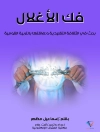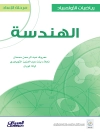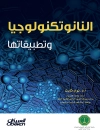EDUCATING PHYSICIANS
The current blueprint for medical education in North America was drawn up in 1910 by Abraham Flexner in his report Medical Education in the United States and Canada. The basic features outlined by Flexner remain in place today. Yet with the past century’s enormous societal changes, the practice of medicine and its scientific, pharmacological, and technological foundations have been transformed. Now medical education in the United States is at a crossroads: those who teach medical students and residents must choose whether to continue in the direction established over a hundred years ago or to take a fundamentally different course, guided by contemporary innovation and new understandings about how people learn.
Emerging from an extensive study of physician education by The Carnegie Foundation for the Advancement of Teaching, Educating Physicians calls for a major overhaul of the present approach to preparing doctors for their careers. The text addresses major issues for the future of the field and takes a comprehensive look at the most pressing concerns in physician education today. The key findings of the study recommend four goals for medical education: standardization of learning outcomes and individualization of the learning process; integration of formal knowledge and clinical experience; development of habits of inquiry and innovation; and focus on professional identity formation.
Like The Carnegie Foundation’s revolutionizing Flexner Report of 1910, Educating Physicians is destined to change the way administrators and faculty in medical schools and programs prepare their physicians for the future.
Tabella dei contenuti
Foreword: On the Shoulders of Flexner v
Acknowledgments xiii
About the Authors xv
Introduction 1
Part One Today’s Practice, Yesterday’s Legacy, Tomorrow’s Challenges
1. Educating Physicians: Context and Challenges 11
2. Being a Doctor: Foundations of Professional Education 34
Part Two Learning the Physician’s Work
3. The Student’s Experience: Undergraduate Medical Education 75
4. The Resident’s Experience: Graduate Medical Education 113
Part Three External Pressures and Internal Forces for Change
5. Regulating and Financing Medical Education 163
6. Leadership for Organizational Change 189
Part Four Meeting Tomorrow’s Challenges: A Vision of the Possible
7. Realizing the Vision: Transforming Medical Education 213
8. Supporting Excellence Through Effective Policy 247
References 257
Name Index 285
Subject Index 293
Circa l’autore
THE AUTHORS
Molly Cooke codirected the Study of Medical Education at The Carnegie Foundation for the Advancement of Teaching. She is a professor of medicine and holds the William G. Irwin Endowed Chair at the University of California, San Francisco School of Medicine.
David M. Irby codirected the Study of Medical Education at The Carnegie Foundation for the Advancement of Teaching. He is vice dean for education and a professor of medicine at the University of California, San Francisco School of Medicine, where he directs undergraduate, graduate, and continuing medical education programs and heads the Office of Medical Education.
Bridget C. O’Brien is an assistant professor of medicine at the University of California, San Francisco School of Medicine and a researcher in the Office of Medical Education.












